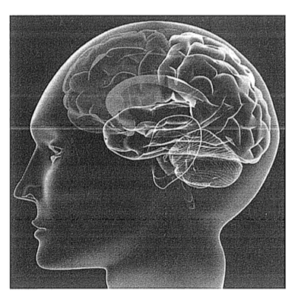The Brain, Learning, and Memory

1 The process of learning involves a modification in behavior as a result of an increase in knowledge or skills. In contrast, memory is the ability to recall information or experiences. Learning and memory, however, are closely linked, with each depending upon the other. Learning relies upon memory in that it requires the storage and retrieval of information. Likewise, memory depends on learning because an individual's established knowledge base provides a structure to which incoming data can be attached.Dramatic breakthroughs in brain research today continue to clarify the details of both, thereby providing educators and students with valuable academic study skill strategies.
2 Using brain-imaging techniques, neuroscientists have tracked three distinct stages of memory: sensory, short-term, and long-term. Initial perceptions including visual, auditory, and olfactory* information from the surrounding environment are held in sensory memory for a period of up to three seconds. [A] Selective attention to specific environmental stimuli allows for their transfer to short-term memory. [B] Here, approximately seven single or chunked items can be stored for roughly 30 seconds without repetition, which enables lengthened storage. [C] Short-term memory is also called working memory because it is often used to solve temporary problems involving reasoning processes. [D] For instance, in writing a research paper, a student employs working memory to organize the facts into a coherent report.
3 The ability to transfer information from short- to long-term memory or encoding is of particular relevance in the learning process. Attention, repetition, and association with prior knowledge are the methods people use to encode new information. Neurologically, this is accomplished by repeatedly processing the information through the hippocampus, a structure in the brain where associations are formed. The critical factor in the encoding process is the perceived meaningfulness of incoming data in terms of pre-existing mental frameworks. The greater number of associations a person can make with established learning, the better that new information will be retained. This is because memories are not stored in a single location within the brain. Instead, they are complex neuronal networks spread throughout its entire surface. Establishing as many connections as possible with a newly learned item is essential. In this way, it can be more easily recalled at a later date.
4 This neuroscientific understanding can be applied to academic study. Accessing background knowledge on a topic prior to learning primes the brain to make associations with existing knowledge. Continually posing mental questions while reading or listening allows the learner to compare and contrast new data with what is currently understood. Classifying or categorizing new material facilitates retention because it involves making connections. The better organized the learning, the easier it is to remember. Furthermore, because of the brain’s patterning abilities and innate search for meaning, benefits are gained through a solid grasp of overall concepts. In this way, relevant details can be classified into their appropriate categories. Therefore, tactics including selectively highlighting key information in a textbook, taking notes on main ideas, outlining, and summarizing all boost encoding effectiveness.
5 Mere encoding, however, does not ensure retention or recall. In fact, research reveals that people forget about 80 percent of what they learn within 48 hours. In order to secure permanent long-term memories, the processes of storage and retrieval must be activated. Storage involves review and REM sleep, where the day's learning is replayed and reinforced in the hippocampus. In review, the retrieval of information copies it temporarily into working memory so that it can undergo further processing, again in the hippocampus.
6 In classic research, Herman Ebbinghaus outlined an optimal review schedule. He demonstrated that the understanding of new material peaks 10 minutes after learning, with this being the best time for a preliminary review. Subsequent study after one- day, one-week, one-month, and six-month intervals was noted as the most favorable in achieving permanent storage. Once permanent, memories no longer need strengthening in the hippocampus. Instead, the memory traces are stored in neuronal networks related to regions of the brain where the sensory inputs initially occurred.
5. Look at the four squares that indicate where the following sentence could be added to paragraph 2.
An example of short-term memory is the ability to recall a phone number just looked up as it is dialed.
Where would the sentence best fit?